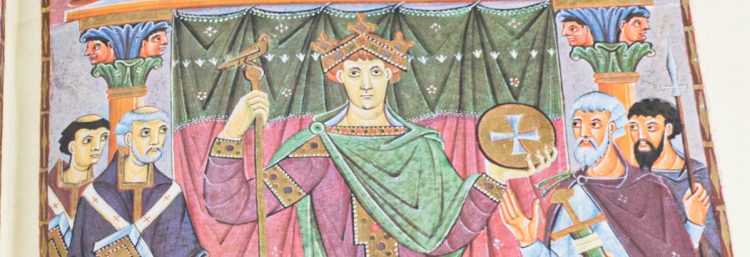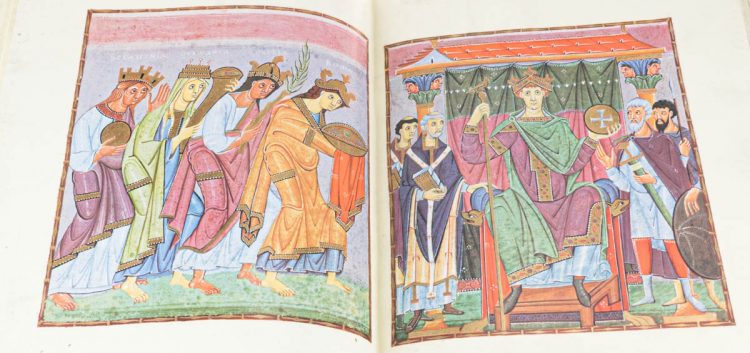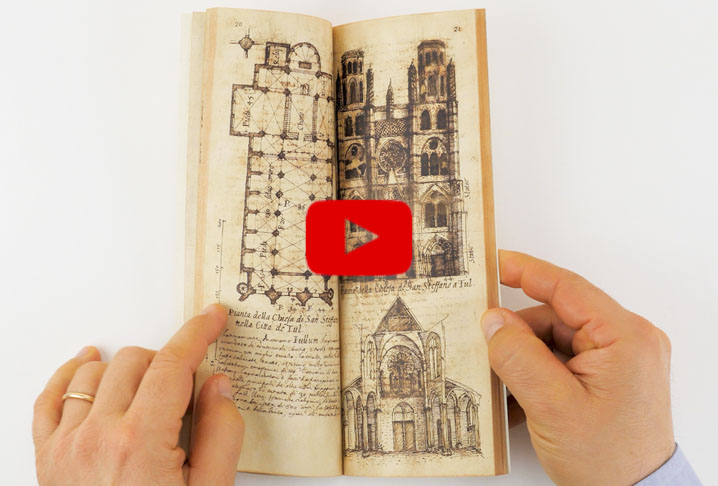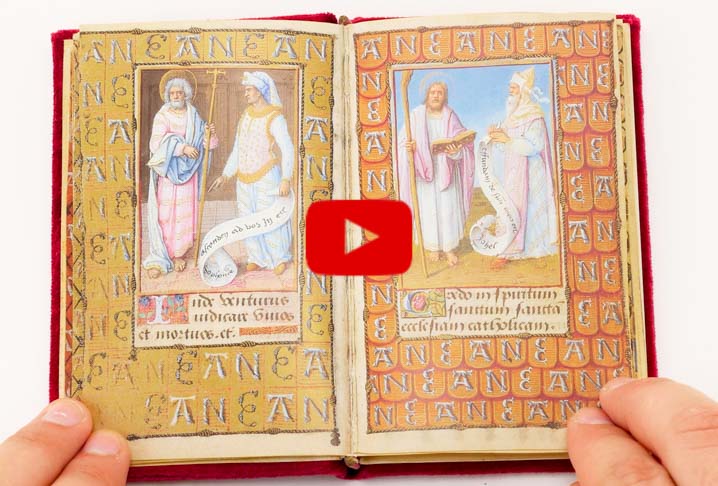Around the year 1000, Holy Roman Emperor Otto III and his mother Teophanu had a lasting influence on European politics and culture. A marriage certificate, a devotional codex, and a gospel book still witness their grandeur.

Ottonian art takes its name from a Saxon dynasty that ruled over Germany, Switzerland, part of Serbia, and northern Italy around the turn of the 11th century. The life story of one of its emperors, Otto III, can be told through three manuscripts, which detail his origins and portray him as the ideal ruler.
A Wedding Between Cultures
On April 14th, 972, Pope John XIII concluded a political wedding of the highest order to symbolize the close relations between the Western and Byzantine empires. The marriage between Holy Roman Emperor Otto II and Byzantine princess Theophanu granted not just international treatises, but also cultural exchange.
Their marriage certificate testifies to the union between Western and Byzantine art and courtly traditions — its three parchment pieces, measuring almost 150 cm in length, are penned with shimmering gold script on a ground of indigo with purple medallions.
Eight years later after the marriage, Theophanu gave birth to their only son, Otto III, who was anointed king when he was only three years old, in 983, following the death of his father. He was educated by two of the best imaginable teachers: Bernward of Hildesheim and Gerbert of Aurillac, who would later become, respectively, Bishop of Hildesheim and Pope Sylvester II.
With their help, Otto III learned not just to admire the splendors of Ancient Rome, but also to speak and read Greek and Latin. His mother and the monk Nilus the Younger introduced the young king to Byzantine art and culture.
The Royal Prayer Book of Otto III
Archibishop Willigs of Mainz, who had crowned Otto III when he was only three, presumably also commissioned what was later recognized as one of the most magnificent codices of its age: the Royal Prayer Book of Otto III.
A manuscript intended for the king’s private devotion, it is one of the few extant royal prayer books made in the Middle Ages.
The prayer book does not just glow with the beauty of purple and gold, it also provides an impressive insight into the concept of rulership according to the Ottonian dynasty.
Otto III was less than twelve when he was given the manuscript, which contains no less than three full-page portraits of the young ruler, who was to become familiar with the ideals of rulership in reference to religion.
In the illuminations, Otto is seen praying between the Saints Peter and Paul; kneeling before Christ, who is represented within a mandorla; and sitting on his throne while receiving a prayerbook from a clergyman.
A Ruler or a Saint? The Gospel Book of Otto III
In his short life, which ended at only 21 years of age in 1002, Otto III never married or fathered any children, yet he presumably commissioned one of the most significant manuscripts of his age, with as many as 34 full-page miniatures shimmering with gold.
The Gospel Book of Otto III went down in history as a superb example of the Reichenau school of illumination, made in the monastery of Reichenau, an island on Lake Constance, in the heart of Europe.
Between the canon tables and the portrait of St. Matthew, where gospel book illuminators usually place the portrait of Christ, is a double-page miniature of Otto III, flanked by military men on one side and clergymen on the other, representing religious and temporal power.

Larger than any other subject in the frame, Otto III is thus made superior to both religious and secular powers, and his gaze and gestures are reminiscent of paintings of Christ the King.
Seated in a temple, Otto III grips the royal orb in his left hand and the imperial scepter in his right — the seams on his purple tunic, gleaming with precious gems and gold thread, are reminiscent of the decoration on the Lothar Cross.
On the left side, like the Wise Men paying their respects to the newborn Jesus, are the personifications of the subject territories: the Slavic east, Germany, France, and Italy.
The order in which they stand mirrors the emperor’s political priorities. Roma is the first, and the one whose gift is the most precious, for she protects it with a ruby-red cloth.
NEW WEEKLY VIDEOS
Find our more about the Travel Notebook of Vincenzo Scamozzi (Vicenza , Musei Civici di Vicenza — Gabinetto dei Disegni e Stampe) on our website!
Find our more about the Prayer Book of Anne de Bretagne (New York, The Morgan Library & Museum, MS M.50) on our website!








